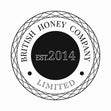You have no items in your shopping cart.
Last orders for Christmas 22nd December! Also shipping on 29th / 30th for New Year tipples!
HONEY INFORMATION
|
|
||
CrystallisationCourtesy of wired.com A common misconception is that honey that has crystallised has “gone bad” or that it is a sign of contamination. No! It’s actually a sign of high quality honey. Don’t throw your crystallised honey away, there is a simple way to restore it to its former glory. Three things make honey more likely to crystallise: Honey is a super-saturated solution of two sugars: glucose and fructose. Since it’s super-saturated, it’s a natural chemical process that some of the sugars eventually come out of solution. Honey will even crystallise when it’s still in the comb.
Here’s a simple break down what’s happening in your honey, and what you can do about it. |
||
Temperature
|
||
|
Honey will crystallise in the hive if the temperature goes below 50ºF (10ºC), and honey will crystallise in your containers if you have a cold cupboard cabinet. Finding a warmer spot to store your honey will slow crystallisation. It’s fairly simple to turn your honey back into a smooth liquid again by heating it. The best way to do this is by placing your honey in a bowl of warm water and slowly letting it warm up. Microwaving overheats the honey and doesn’t heat evenly, so that’s not recommended. The problem is, as soon as your honey cools down, it will begin to firm up again. The simplest way to deal with this is to embrace your lovely honey lumps, and acquire a taste for crystallised honey. After a few sessions of heating and cooling, your honey will lose that wonderful aroma, and just become a sugary syrup. If you really must have smooth runny honey, try heating a smaller batch, rather than the whole container. Honey also keeps best in glass, rather than plastic, and glass is much better for reheating. |
||
The Ratio of Glucose and Fructose in the Honey
|
||
|
Honey is a super-saturated solution of two sugars: glucose and fructose. The proportions of these two sugars are characteristic of the plants the bees fed on to make their honey. It’s the glucose that crystallises, so some types of honey are more resistant to crystallisation because they have low glucose. |
||
Pollen
|
||
|
Pollen in honey is normal, and acts as a sort of honey provenance. Pollen in honey verifies what plants the bees are feeding on. Bees are fuzzy, so while they are drinking nectar to make honey, they get covered with pollen. Honey with pollen in it is great honey, but crystallisation happens faster when there are small particles available to build on. Natural, pure honey has a lot of those in the form of pollen grains. A lot of mass-produced honey is now filtered to remove pollen. This does create a more shelf-stable honey, and it is clearer and brighter in colour. However, the problem with over processed honey is you don’t know where it came from, or what kind of plants the bees were feeding on. Filtering makes it easier for honey to be processed and shipped longer distances and means that many different kinds of honey can be blended together undetectably. How can you get the best honey? Buy local. And by local, look for something from a beekeeper or farm that is in your town or village, with a traceable address and name. Embrace crystallised honey. It’s the result of a natural process. |
||
NutritionCourtesy of livestrong.com
|
||
|
A healthy natural sweetener, raw honey offers many nutritional benefits without the man-made chemicals found in many other forms of sweeteners. Although nutrition facts vary slightly depending on the floral variety, they remain similar as a whole. |
||
Calories
|
||
|
Each tablespoon of raw honey contains 64 calories and is fat-free, cholesterol-free and sodium-free. The average composition of raw honey is approximately 80 percent carbohydrates, 18 percent water and 2 percent vitamins, minerals and amino acids. |
||
Carbohydrates
|
||
|
Packed with natural sugar -- primarily fructose and glucose -- raw honey is high in carbohydrates. Each tablespoon contains 17 grams of carbohydrates, 16 of which are sugars. A 2001 University of Memphis study reports raw honey is an effective carbohydrate for boosting endurance during exercise. |
||
Vitamins and Minerals
|
||
|
Raw honey is rich in vitamins and minerals. Vitamin B6, thiamine, niacin, riboflavin and pantothenic acid are common vitamins found in raw honey, although amounts vary depending on the floral source of the honey. Calcium, copper, iron, magnesium, manganese, phosphorus, potassium, sodium and zinc are abundant minerals in raw honey. |
||
Antioxidants
|
||
|
Raw honey also contains antioxidants, present in the form of polyphenols, which help fight off free radicals that contribute to many serious diseases. |






